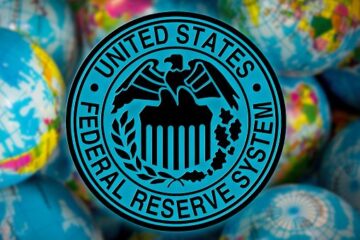Once its launch in Austin, Texas, proves successful, Tesla plans to expand its robotaxi program to multiple cities.
Self-driving Teslas have already been spotted on city streets with a human riding shotgun ahead of the program’s official launch.
”It’s prudent for us to start with a small number, confirm that things are going well, and then scale it up,” Musk told CNBC‘s David Faber last month.
Related: First look: Tesla’s biggest bet in years makes street debut
However, once it proves its concept in Austin, Tesla plans to expand the robotaxi program to Los Angeles and San Francisco soon after.
With Tesla’s plan to expand in the state, Musk will be heading back into that regulatory environment, except now the rules governing autonomous driving are much stricter.
But first things first.
Tesla must first prove that its camera-based Full Self-Driving software is capable of navigating complex urban environments in Austin.
“Consumers are skeptical of the full self-driving (FSD) technology that undergirds the robotaxi proposition, with 60% considering Tesla’s full self-driving ‘unsafe,’ 77% unwilling to utilize full self-driving technology, and a substantial share (48%) believing full self-driving should be illegal,” the May 2025 edition of the Electric Vehicle Intelligence Report (EVIR) said.
Tesla has some work to do to convince the public that it is ready to drive U.S. roads without human assistance.
You’re about to start seeing Teslas without drivers in Texas.
Image source: van der Wal/Getty Images
Cybertruck using FSD drives in the wrong lane in concerning video
Tesla offers users a different suite of driver assistance programs based on their subscription level.
The most advanced supervised FSD features include automatic lane change, navigation, traffic light and stop sign recognition, autoparking, and the ability to “smart summon“ your vehicle to you from miles away.
But a new video circulating on X, which Tesla CEO Elon Musk owns, suggests that the software undergirding the system isn’t ready for prime time.
One user who says he uses FSD for over two hours of travel daily in the Philadelphia area showed a video that should concern any driver who shares the road with these vehicles.
Related: Tesla takes drastic measures to keep robotaxi plans secret
The Cybertruck makes a blind left turn and ends up on the wrong side of a two-lane roadway. The onboard display shows that the vehicle’s computer recognizes that it is in the wrong lane.
Still, it drives along anyway for a good 10 seconds before the driver takes control of the vehicle, just seconds before oncoming traffic arrives.
I use FSD for over 2 hours of travel every day around the Philadelphia area and have never experienced an issue as bad as this one. Any ideas why it chose the completely wrong lane? Has anyone ever experienced anything like this? pic.twitter.com/SwxMqCt5Df
— Billy (@billykyle) June 15, 2025
Respondents under the post shared unverified accounts of similar incidents with their Tesla.
One Cybertruck owner said, “Exact same thing happened to me yesterday, just shifted into wrong oncoming lane and started logging down the street.“
Another Cybertruck owner said, “The Cybertruck we just picked up two days ago is our 7th Tesla and have been using FSD from the conception…so far I’m pretty disappointed in the FSD for CT. It consistently drifts over the yellow line when in the left lane on the highways.“
The original poster responded to this comment by saying, “Yea it really does hug the left lane.“
Tesla FSD has issues, one analyst doesn’t believe it’s street-ready
Piper Sandler analyst Alexander Potter and his team don’t think FSD version 13 is advanced enough to handle the challenge.
Piper Sandler had an overweight rating on Tesla, and FSD is the most significant contributor to the company’s long-term $400 price target as of May.
Despite its bullish outlook, the firm says that FSD version 13 cannot support truly autonomous vehicles without human control.
More on Tesla:
Tesla claims rival startup is built on stolen trade secrets10,000 people join crazy Tesla class action lawsuitTesla execs question Elon Musk over controversial X post
The video above suggests the firm is right. Still, Piper Sandler came to this conclusion after a recent call with Elias Martinez, the creator of the FSD Community Tracker, which monitors FSD’s progress.
Tesla hasn’t had a public update to version 13 since it debuted nearly five months ago. Piper Sandler speculates that the company has been focusing on making the Austin launch a success during that time.
Piper Sandler reaffirmed its overweight rating and $400 price target based on Tesla’s commitment to launching its robotaxi program in the coming weeks.
The firm said Tesla’s push forward with robotaxi was “the most important Q1 takeaway.” However, the firm now believes Tesla’s technology can’t handle the task and still retains its bullish outlook.
Related: Tesla’s robotaxi rollout is alarming the public, new report shows


